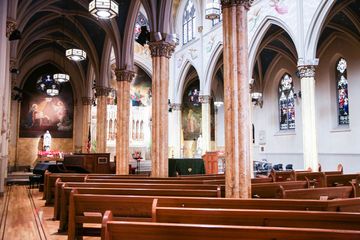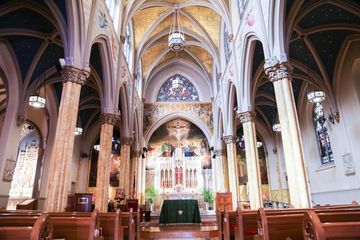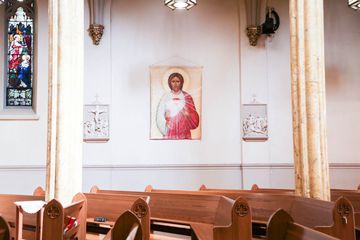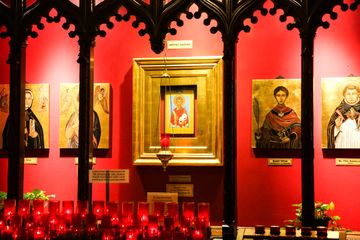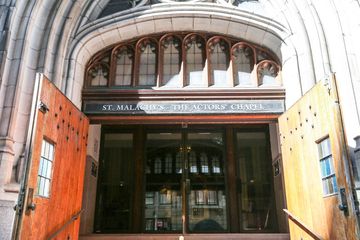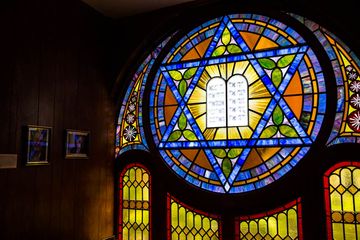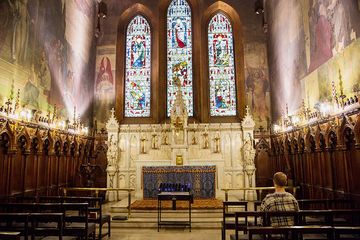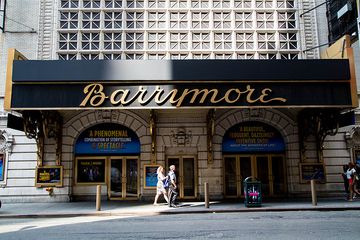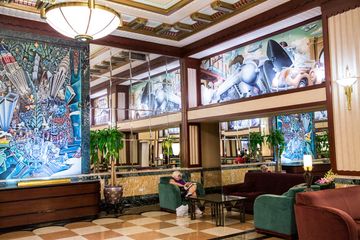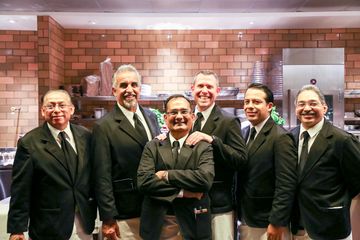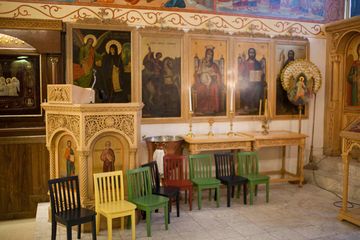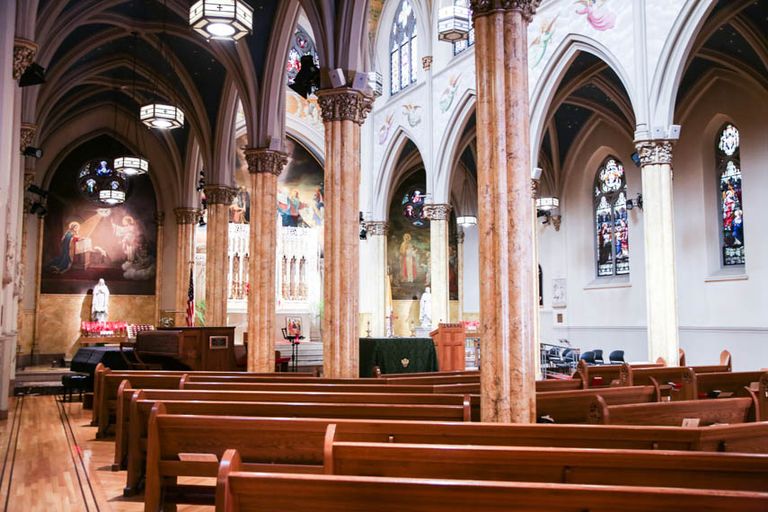
Opened in 1902 as a Catholic parish church, St. Malachy's earned its fame from fame itself. In 1920, the surrounding Theater District and the church began to welcome crowds of people involved in the entertainment business. That year, the Actor's Chapel was constructed underneath the church. A cycle had begun; as the famous sought out St. Malachy's, St. Malachy's became famous and attracted more famed congregants. Recognizing the unconventional schedules of its congregation, the church started to offer mass at four in the morning.
When an earlier incarnations of Madison Square Garden left the area in 1968, this part of town became dangerous; the church fell to a low point that lasted nearly ten years. It was Father George W. Moore who led an outreach plan that helped bring St. Malachy's back to the surface, ready to serve the needs of its congregants. Now, the church places special focus on the comfort of their aging community. Although St. Malachy's is a Catholic church, all are invited to join and worship among the eclectic assembly.
